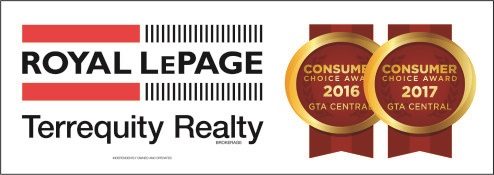
March 23, 2021
With summer approaching, Canadians naturally dream of weekends by a lakeside cottage, causing a seasonal spike in the recreational property market.
But this year, things are different.
Indeed, according to a new report from Royal LePage, the aggregate price of a house in Canada’s recreational regions is forecast to increase 15 per cent this year to $502,730, as demand continues to rapidly outpace inventory. The company revised its 2021 recreational property forecast, released in November 2020, upward to reflect the increasing unmet demand from potential buyers who are actively looking for properties.
And like with the residential property market, Ontario leads the way in price growth due to this increasing interest – thanks in large part to COVID-19.
“From coast to coast, the line between primary residence and recreational property is blurring,” says Phil Soper, president and CEO, Royal LePage. “The trend began last summer when the option of traveling abroad was taken away, and continued to gain popularity as it became clear that with access to high-speed Internet, many people can do their jobs from just about anywhere.”
The aggregate price of a house in Canada’s recreational property regions increased 16 per cent year-over-year to $437,156 in 2020 compared to 2019. During the same period, the aggregate price of a waterfront property increased 9.8 per cent to $813,385 and the aggregate price of a condominium rose 10.5 per cent to $310,257.
Supply shortages
Houses in the recreational regions of Ontario and Atlantic Canada are forecast to see the highest price appreciation in the country this year, set to increase 17 per cent, while prices in Quebec and BC are expected to increase 15 per cent and 13 per cent, respectively.
In many areas, supply shortages are forcing buyers into multiple-offer situations, which often result in properties selling above the asking price.
“The low inventory, high demand scenario that is defining Canada’s current real estate landscape can be frustrating for buyers and their agents,” adds Soper. “Without enough supply to meet demand, prices continue to increase at above normal rates. And with so few listings to choose from, owners are concerned they will have nowhere to go if they sell before buying, so they hesitate to list. This cycle makes it difficult for anyone to move ahead.
“Life during the pandemic has made cottage country and country living more desirable than ever, in every part of Canada. The flexibility provided by working remotely, excess savings from months sitting at home, and low interest rates have left Canadians young and old alike to seek properties with more space, easy access to nature, and the ability to achieve that ever-elusive work-life balance. And, an increasing number of new owners intend to use these escapes for both weekend play and Monday to Friday work.”
Royal LePage real estate professionals in western and Atlantic Canada have reported an increase in out-of-province buyers over the past year.
The younger generation is a very active segment of buyers. A recent Royal LePage survey on real estate trends among Canadians aged 25 to 35 found that when given the choice, 47 per cent said they would choose small town or country living, while 45 per cent said they’d prefer to live in a city. Nearly two-thirds of Canadians in this age group (63 per cent), who are employed or seeking employment, say the ability to work for an employer that allows the option of remote work is important. Fifty-two per cent said the availability of remote work has increased their likelihood to move further from their current or future place of work. Overall, 39 per cent of this cohort are considering a move from their current home to a less dense area as a result of the pandemic, while 46 per cent said the pandemic had no impact on their desire to move to a less dense area.
“According to our research, access to high-speed Internet and the ability to work remotely are among the top criteria for those seeking properties in Canada’s recreational regions, followed closely by four-season usability,” says Soper. “There is no doubt the pandemic has had an impact on our lifestyle, but also our mindset. The more time Canadians spend in their homes, the more apparent their needs and priorities become.”
Ontario leads the way
The aggregate price of a property in Ontario’s recreational regions is forecast to increase 17 per cent in 2021 to $547,207, after rising 19.4 per cent last year to $467,698. In 2020, the aggregate price of a waterfront property increased 21.5 per cent to $673,400, while condominiums in these areas increased 8.5 per cent to $406,188.
“Muskoka, like many smaller communities within a reasonable drive from the GTA, was particularly impacted by the migration out of the GTA, and by buyers who accelerated their long-term plans to purchase a second property,” says John O’Rourke, broker, Royal LePage Lakes of Muskoka. “A scarcity of inventory added more fuel to the fire, creating competition in the market unlike anything we’ve seen before.”
10 hottest Ontario waterfront property markets (2020 prices; % increase)
Muskoka & Gravenhurst: $979,900; 28.1%
Land O’Lakes: $450,000; 27.8%
Haliburton County: $700,000; 27.3%
Kawartha Lakes: $662,745; 25.8%
The North Channel: $265,000; 23.8%
Bruce Peninsula: $590,000; 23.6%
Rideau Lakes: $525,000; 22.8%
Huron & Perth County: $550,000; 22.2%
Peterborough County: $690,000; 18.0%
Honey Harbour: $700,000; 16.7%
Due to the high prices in many Ontario rec property regions, prospective buyers might think about looking outside the province to more affordable areas – notably Atlantic Canada.
Waterfront properties, select markets outside Ontario (2020 prices; % increase)
Les Laurentides, Que.: $345,000; 43.8%
Shediac, NB: 4439,116; 42.8%
Les Pays-d’en-haut, Que.: $443,500; 26.7%
Cape Breton, NS: $266,400; 26.5%
Interlake, Man.: $321,000; 25.9%
Antoine-Labelle, Que.: $235,000; 24.0%
Saguenay, Que.: $260;000; 20.9%
South Shore, NS: $315,000; 16.7%
North Central Saskatchewan: $495,000; 16.5%
Lac Du Bonnet, Man.: $425,000; 11.8%
Annapolis Valley, NS: $210,000; 10.5%

